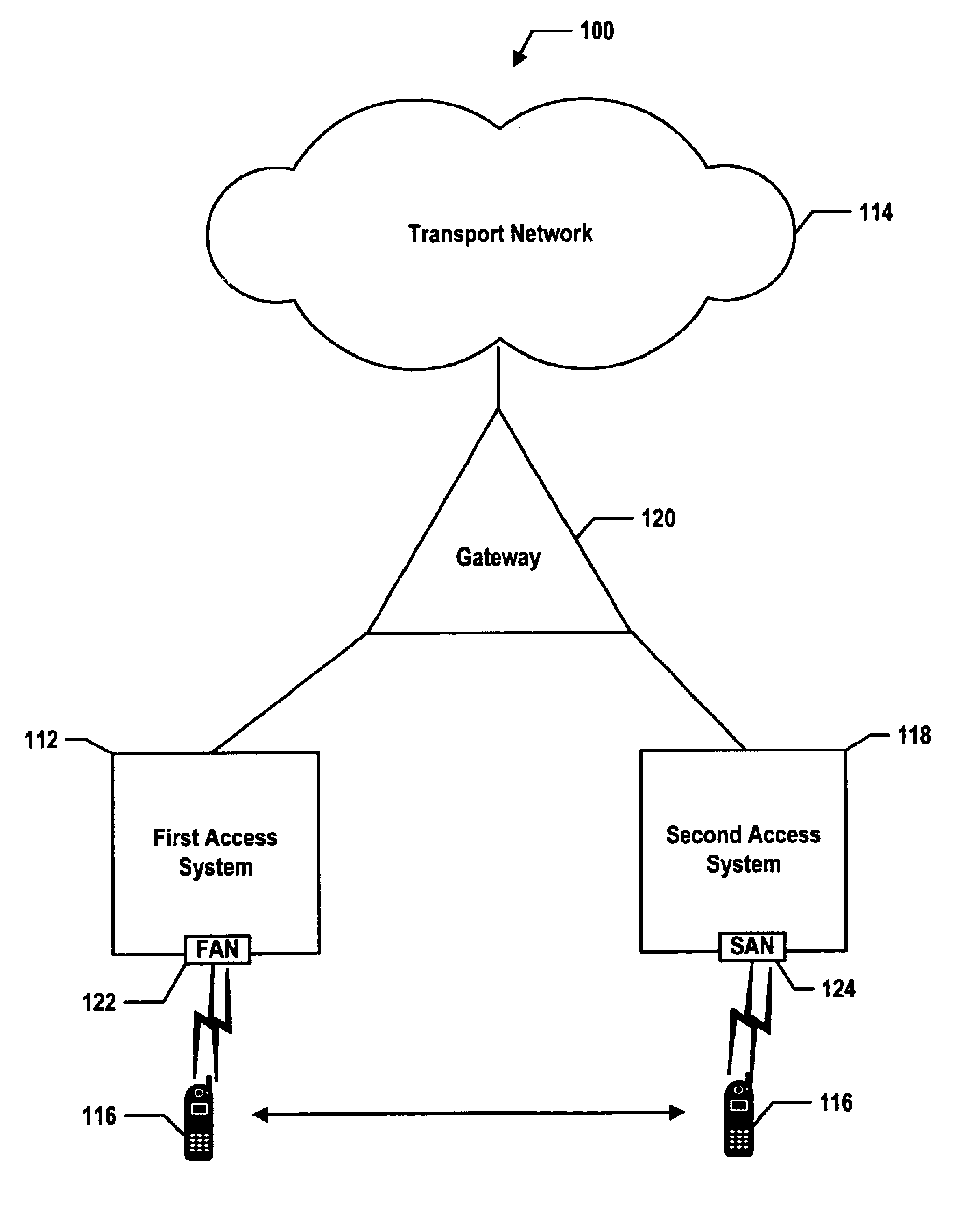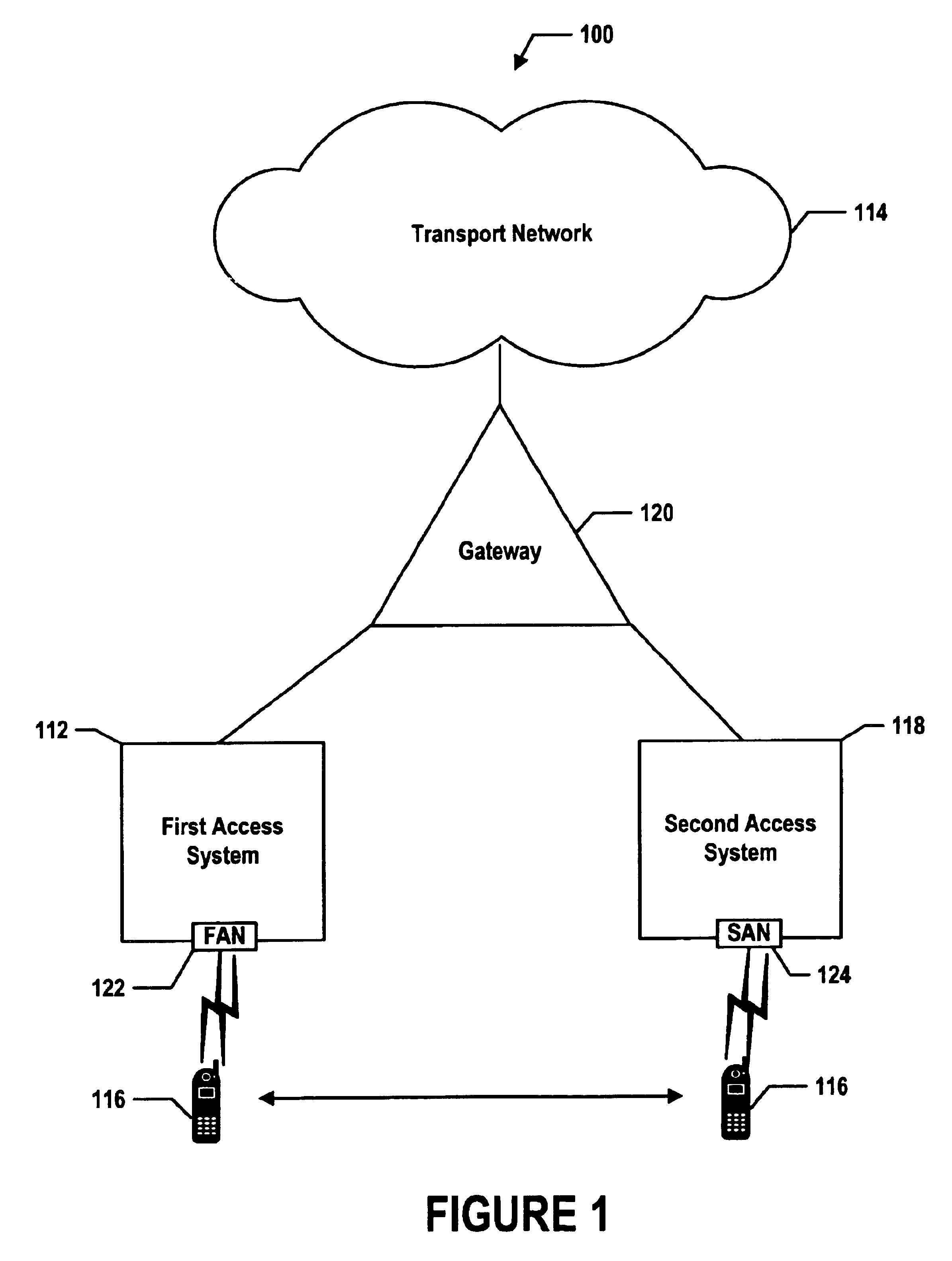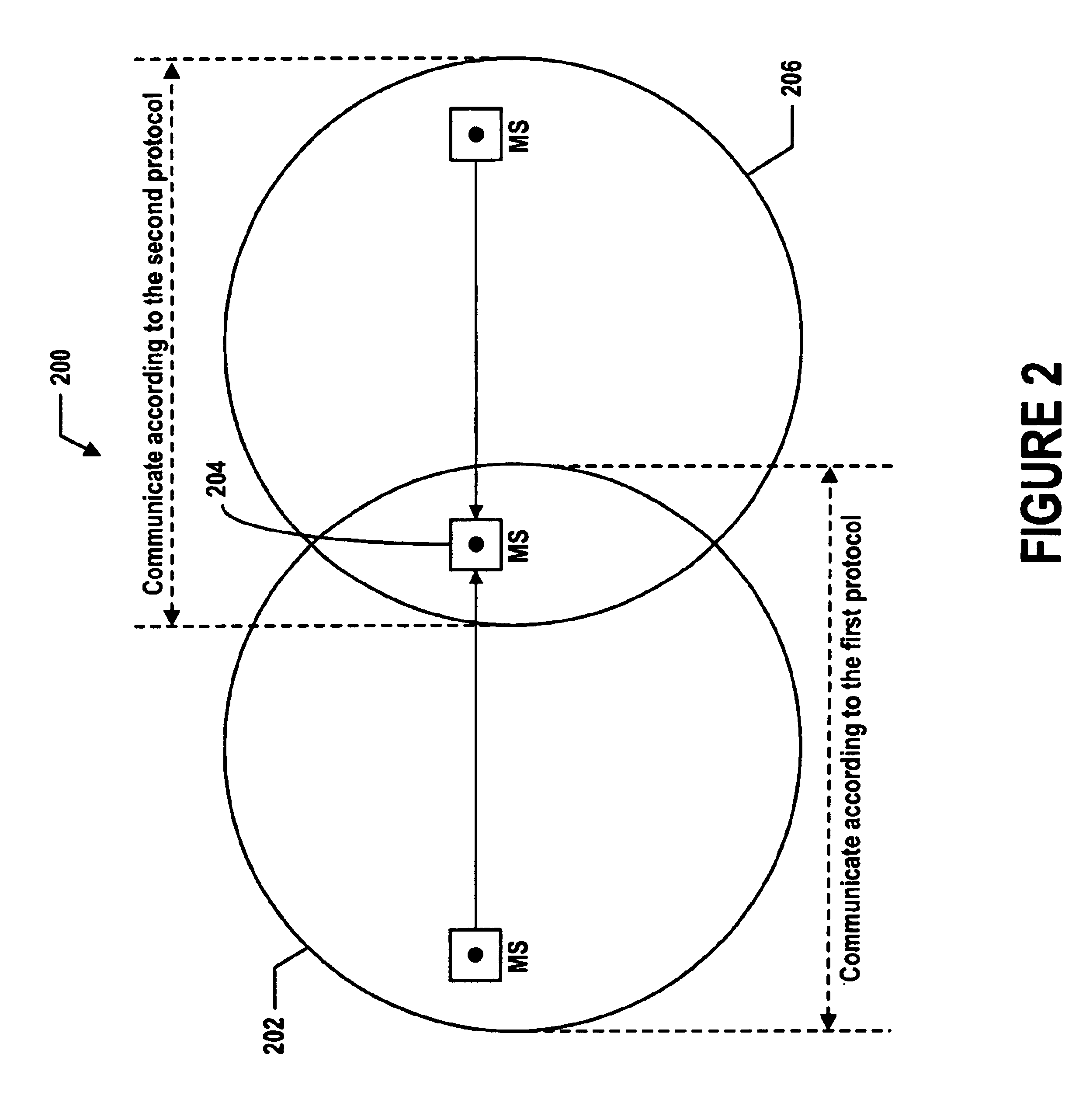Method and system for intersystem wireless communication session arbitration
- Summary
- Abstract
- Description
- Claims
- Application Information
AI Technical Summary
Benefits of technology
Problems solved by technology
Method used
Image
Examples
example 1
(i) EXAMPLE 1
Referring to back to FIGS. 3 and 4, the following illustrates the comparison function for mobile station arbitration based on the cost of service for the first-access network. As an initial condition, the mobile station 116 engages in a voice session according to EVRC via the CDMA-format public wireless network 412.
The mobile station 116 or more particularly, the first-protocol transceiver 308 embodied as a CDMA transceiver, receives from the CDMA-format public wireless network 412 over the IOS A1 channel a signaling message containing a cost of service metric or measurement for communicating the voice session via the CDMA-format public wireless network 412.
The mobile station 116, or more particularly the arbitration module 304, is provisioned with a preprogrammed cost-of-service threshold for the CDMA-format public wireless network 412. The mobile station 116, however, could receive from the CDMA-format public wireless network 412 the cost of service threshold extracte...
example 2
(ii) EXAMPLE 2
The following example illustrates the comparison function for mobile station arbitration using relative preferred-network metrics and relative preferred-network thresholds. As an initial condition, the mobile station 116 engages in a voice session according to EVRC via the CDMA-format public wireless network 412.
The CDMA transceiver 308 detects or otherwise measures the signal-strength of the CDMA-format public wireless network 412 using beacon signals, which the BTS 422 continuously transmits. In addition, the 802.11 transceiver 310 likewise detects or otherwise measures the signal-strength of the 802.11-format WLAN from the WLAN's beacon signals.
The arbitration module 304 is provisioned with a preprogrammed CDMA-signal-strength-scale factor for normalizing the signal-strength metric of the CDMA-format public wireless network 412 (i.e., causing the signal-strength metric to conform to a standard or norm) so as to produce CDMA-signal-strength metric. The arbitration mo...
PUM
 Login to View More
Login to View More Abstract
Description
Claims
Application Information
 Login to View More
Login to View More - R&D
- Intellectual Property
- Life Sciences
- Materials
- Tech Scout
- Unparalleled Data Quality
- Higher Quality Content
- 60% Fewer Hallucinations
Browse by: Latest US Patents, China's latest patents, Technical Efficacy Thesaurus, Application Domain, Technology Topic, Popular Technical Reports.
© 2025 PatSnap. All rights reserved.Legal|Privacy policy|Modern Slavery Act Transparency Statement|Sitemap|About US| Contact US: help@patsnap.com



